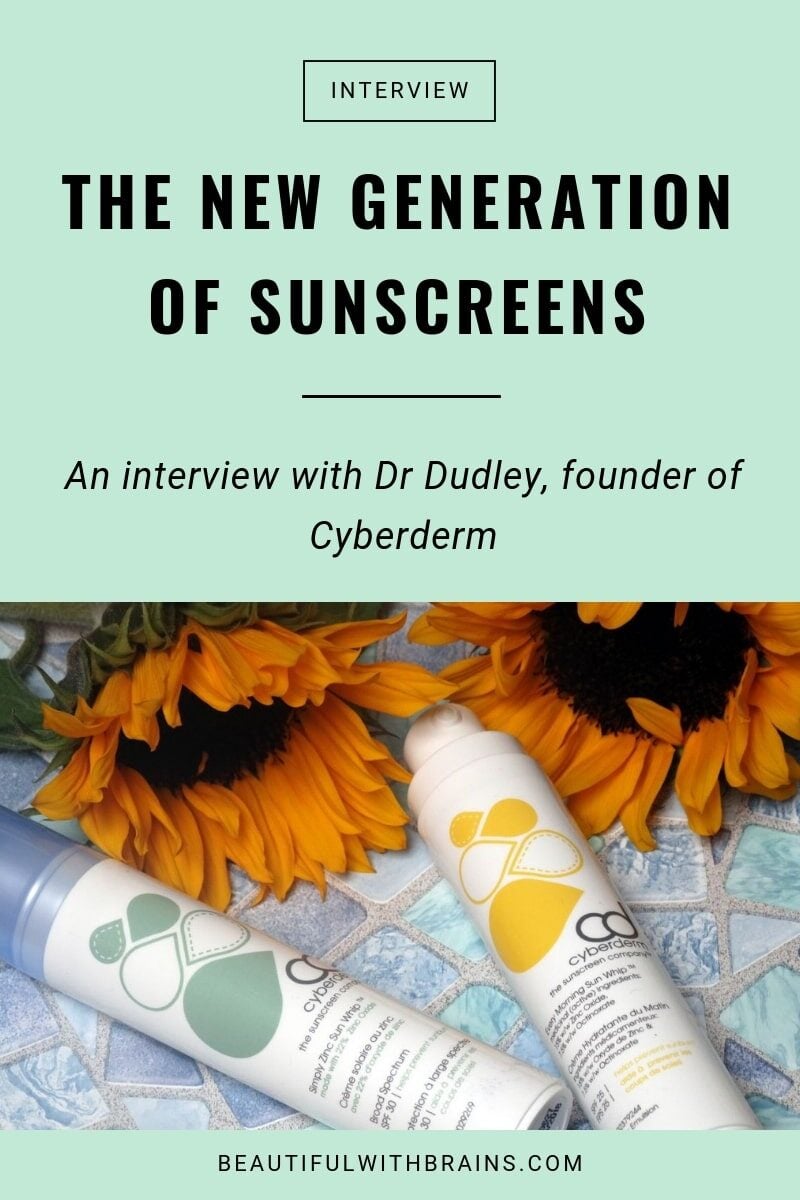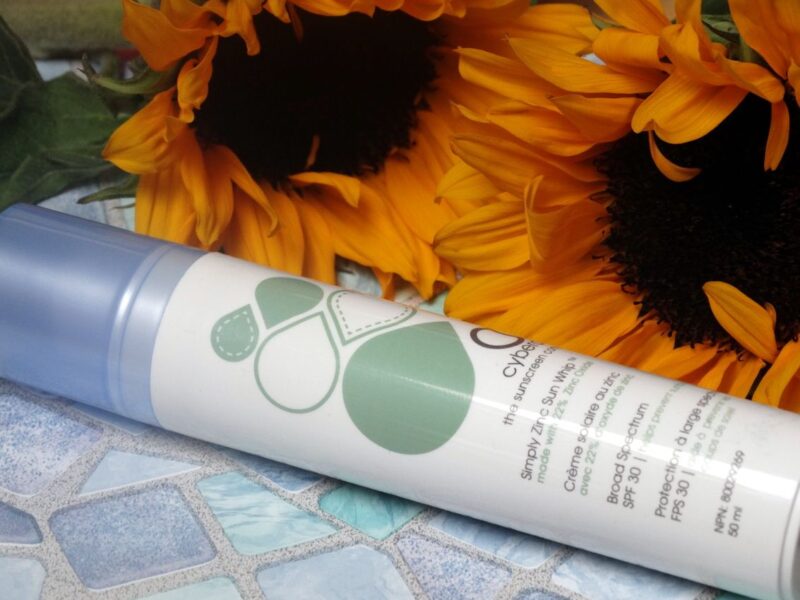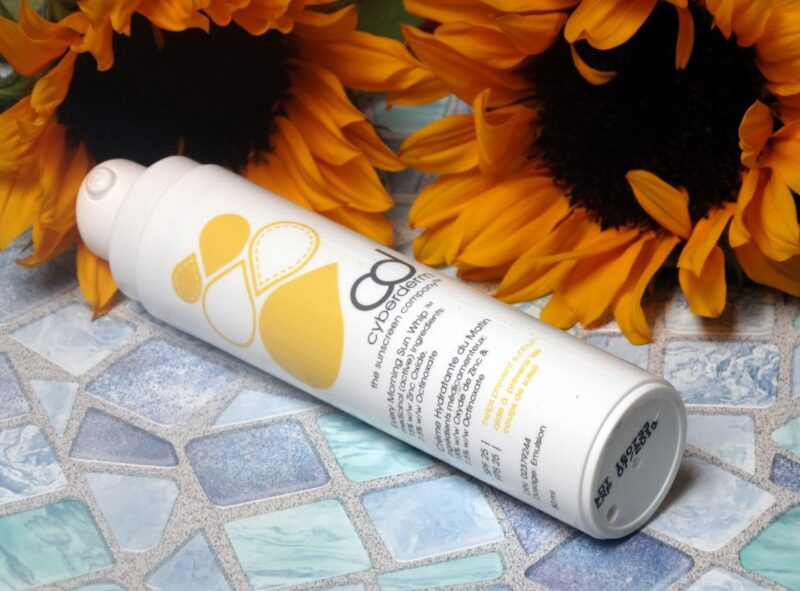
Well, we make things worse by not applying – or reapplying – enough. But how the heck can you do that when you’re wearing makeup? We can’t do and undo our faces every two hours.
Sunscreen expert Dr Denis Dudley is back this week to answer this question. Plus, he also reveals the biggest mistake women make when it comes to sunscreen and spills the beans on the new generation of sunscreens that promises to offer better protection than ever – without the greasiness and white cast so many of its predecessors leave behind.
Curious? Read on:
1. What’s the number one mistake you see women making with sunscreen and what’s the best way to fix it?
The most crucial mistake is to get caught up in marketing and label claims that are misleading in most cases, and do not give any information on the actual protection afforded by the product.
Marketing terms like “natural” or non-chemical versus chemical are entirely false and meaningless. All UV filters are chemicals- some are organic (means they are carbon based but still synthetic) and they may pass into blood depending on molecular size. Mineral based filters like zinc oxide or titanium dioxide are inorganic – produced by a geologic system in mother earth. It could be this is where the “natural” comes from, but this may have been more appropriate a long time ago when they were used in pigment grade forms. Now they are so highly refined, micronized, nanosized, milled, and coated- the word natural hardly applies.
The most crucial element of protection afforded by a sunscreen is the ability to filter and reduce the amount of UVA reaching your skin– measured in the EU by a UVA Protection Factor (UVA-PF). This is a direct estimate not required in N. America but indirectly assessed by a secondary measure called Critical Wavelength (CW), often misleading- as two sunscreens with the same CW can have very different UVA-PF values. Ignore the broad spectrum claim as most of our brand name sunscreens with this on the label– even under the new FDA and Health Canada regulations- have little or no UVA1 extinction.
Learn to look for filters and their effective concentrations. Ignore SPF numbers and assume that the actual protection in sunlight is SPF 10-15. Every woman should aim to avoid soluble filters but if you are pregnant or nursing you must stringently avoid any risk to your little one. Choosing to use a particle type large filter that never enters your blood is prudent and a decision to err on the side of caution. The scarcity of safe and effective filters in N. America makes it easy. Select zinc oxide alone (>20%) or in combinations of 15-20 % with 7.5% of titanium dioxide or encapsulated octinoxate.
The concentrations or ingredient load are also crucial- as at these levels a SPF of 30 is likely accurate and close to actual performance in sunlight and will have a UVA-PF in 10-14 range, and would be approved in the EU. Many mineral sunscreens found in health stores have woefully inadequate amounts of zinc oxide and titanium dioxide in the 3-9% range that claim false or boosted SPF values above 30- only possible with chemicals added to inhibit redness- another dangerous practice that deprives you of your biologic warning signal to get out of the sun. Like most USA sunscreens, they will only have a UVA-PF value between 3-8, which cannot prevent skin cancer and photoaging.

2. How often do you recommend reapplying sunscreen? And what’s the best way to do that if you’re wearing makeup?
The need to re-apply sunscreen depends on solubility of the filters and the dispersion. Applying every 2-3 hours is a label regulation to first compensate for applying inadequate amounts as most consumers do, and to replace a film that has been washed off by sweat or water, and in the case of the soluble organic filters, is being absorbed into your blood at varying amounts and rates, and in need of replacement on the skin surface.
Insoluble particle type filters dispersed with new inert materials are by nature less likely to wash off and there is technology to make a sunscreen dispersion bioadhesive- it adheres to the dead layer or stratum corneum of the epidermis. Another way to make sunscreens more waterproof is to make them anhydrous- disperse them without little or no water. This also prevents the evaporation of water content that also modifies the function and efficiency of the sunscreen. Our dispersions do not require re-application in an everyday situation.
Apply once in adequate amounts to your face and apply your make-up over top. This needs no re-application unless you wash the layers off. If you still are brave enough to use the brand name soluble UV filter combinations, then using a good mineral based makeup with 15% or more of zinc oxide in powdered form will give you lasting daily protection and not require a re-application. Layering a mineral based makeup with 15% zinc oxide (Jane Iredale or similar) over a CyberDERM sunscreen is really the zenith in UV protection for daily purposes.
Never rely on make-up products or sunscreens with only titanium dioxide as an ingredient. It is a UVB filter and may prevent sunburn to a degree and UVB damage but does little to reduce those aging and carcinogenic longwave UVA1 rays. Apply enough of any sunscreen. An average male wearing swimming trunks will require a shot glass full or about 1 ounce for even and adequate protection at the beach.
3. You claim that CyberDERM sunscreens belong to a “new” school of sunscreen formulations. How so and what makes them different from other sunscreens out there?
We believe in the Precautionary Principle, since it meets our personal approach to medical practice and the first precept in medicine- primum non nocere or “first do no harm”. Our first and sacred principle is never to use UV filters or actives that enter the body. Anyone, particularly parents or expectant mothers will likely prefer our approach and err on the side of caution. Our sunscreens were made to be safe for pregnancy and therefore safe for everyone.
Our use of new zinc oxide dispersions in high concentrations to attain accurate real life SPF values and the best UVA-PF values, while still assuring cosmetic elegance and high compliance from esthetic matte dispersions, leads the industry. We carefully select every ingredient for added benefits – – most women will find that they only need to use our sunscreen under makeup without additional cosmetics. We try to keep the total number – both active and inactive to as few as possible. I adapted the phrase “Less is more” as our company motto. It reads “Less chemicals more efficacy”. My daughter Sara took over running CyberDERM and added the word “Please”. This was also an exhortation for others to follow.
Sadly, many sunscreens and cosmetics still have 30-50 and some over 50 total ingredients. It is estimated that the average woman could be applying 100-200 different chemicals every day to her face- most in trace amounts that cannot have any benefit- the end result is that millions of consumers wash off these chemicals each day, and they may ultimately end up in wastewater and the aquifer. We have < than 25 in our two on the market and our new prototypes even less at < 10 total for actives and inactives.
Both of our first generation CyberDERM sunscreens use Snell’s Law and the principle of Index Matching to achieve the clear or transparent – indeed invisible – zinc oxide protective films. Our new formulations (coming soon) mix traditional zinc oxide at the maximum allowed 25% in proprietary dispersions that should give SPF values of 50+ and UVA-PF values above 20 – never before attainable with zinc oxide as the sole UV filter – still highly esthetic and even available in lotion consistency for the first time. Our new formulas that mix zinc oxide with insoluble organic particles for ultra UVA protection are unique, and have never been even attempted in the high ingredient combinations we use, let alone successful. These make our UVA protection metrics arguably the highest in the world as they approach and eclipse the UVA-PF level of 40.

4. Finally, what advice would you give to women who are hesitant to try mineral sunscreens because they worry about them leaving behind a white cast or feeling too greasy on the skin?
My advice: “Just Do it”– try either of our sunscreens. They are made to give a silky matte and dry- touch after- feel on your skin. The dispersion looks white coming out of the pump – but disappears with spreading after 1-2 seconds. It is clear- perhaps invisible in regular light -even on darker skin – unlike the other high zinc oxide preparations with 18% or more, that are invariably whitening and/or greasy to some degree.
We carefully selected ZinClear-IM™ 50CCT (50% ZnO in Capryllic/Capric Triglyceride) from the Australian company Antaria. It has physical characteristics where the unique amorphous particle and a range of particle sizes give bimodal UV attenuation with greater efficiency than organic sunscreens or micron sized zinc and titanium particles. Most ZnO preparations – original pigment, micron or nanosized – still tend to be white on the skin. ZinClear-IM™50CCT can achieve exceptional transparency because the ZnO particles have a unique porous structure that provides a closer match between the refractive index of the particle and that of the carefully selected emollient.
This allows the particles to appear transparent if the right combination of factors in the emulsion preserves the refractive index matching. Studies show that ZinClear-IM™50CCT has over 90% transmittance- much greater than other nanoscale particle and regular pigment ZnO. The Refractive Index of ZnO is ‘matched’ to that of the dispersant CCT at about 1.72 and applies Snell’s Law to the issue of reducing opacity. Since the medium has the same refractive index as the suspended zinc particle, as light passes through the dispersion- there is no bending or reflective scattering, so the suspension or film appears clear on your skin to the naked eye.
Thank you again, Dr Dudley! You can find out more about Dr Dudley’s work, Cyberderm and this new generation of sunscreens here.
What’s your biggest takeaway from this interview?

I HAVE A QUESTION… I LIVE IN GREECE AND I AM BLONDE. I USE SUNSCREEN SPF 50 EVERY SINGLE DAY OF THE YEAR, EVEN IF ITS RAINY…MY EVERY DAY RITUAL IS THE FOLLOWING: DAY CREAM, SUNSCREEN, MAKE UP AND POWDER. RECENTLY, BECAUSE I CANNOT REAPPLY SUNSCREEN OVER MAKE UP, I BOUGHT “JANE IREDALE POWDER ME,SPF 30” (ACTUALLY IT IS A POWDER…) AND I APPLY IT EVERY 3 HOURS. SO THE QUESTION IS : AM I PROTECTED??
Maria, I’m not a big fan of powders because it is so easy to brush them off the skin. But if you apply a few layers, top up regularly and don’t touch your skin often, then yes you should be decently protected.
Hello,
These new sunscreens sound great, but I am really confused as to this topic of mineral sunscreens being absorbed or not. I have found a study that states that Metal oxide sunscreens protect skin by absorption, not by reflection or scattering.
Am I allowed to post the link to the study? If not it can be found by searching “Metal oxide sunscreens protect skin by absorption, not by reflection or scattering”.
Silvia, hello. Or course, you are. From my understanding, mineral sunscreens work by both absorption and reflecting/scattering. But they absorb way more UV light than they scatter.